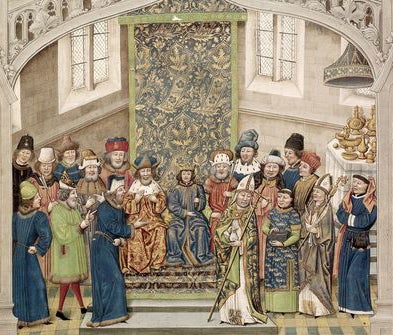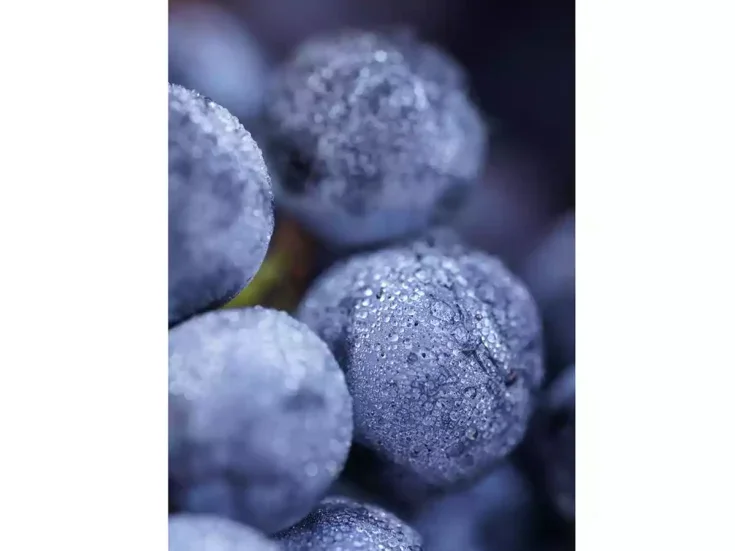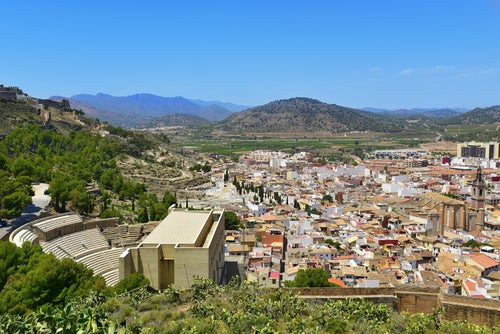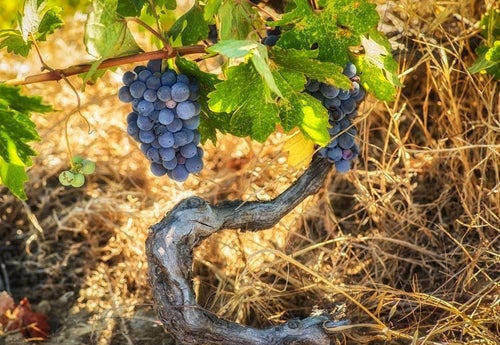
Stuart Walton reflects on a sadly discontinued English tradition of marking coronations and other special occasions with fountains of free wine.
The coronation of King Richard II of England in the summer of 1377 was a more than usually notable occasion. Skipping a generation, the crown had passed to him from his grandfather, Edward III, whose half-century reign had been an era of martial ebullience, punctuated by successive victories over the troublesome French. Richard’s father, an acclaimed warrior known as the Black Prince, as well as his elder brother, had died while the old king was still on the throne. A period of dire uncertainty was put to flight by the gorgeous majesty of a procession through the sun-dazzled streets of the capital to Westminster.
England’s new monarch, radiating solemn dignity as though to the manner born, wore his ten years of age with regal grace. Once the pageantry was over the next day, an eruption of racketing celebration broke upon London. Music and dancing and cheering filled the streets, and to mark gaiety’s triumph over gravity, the Cheapside conduit flowed with free wine.
In her magnificent study of the entwined fates of Richard II and Henry IV, The Eagle and the Hart (2024), Helen Castor notes that at Richard’s coronation, people celebrated with “noisy enthusiasm, their good humour lubricated by the wine that flowed for hours from the public conduits.”1 The plural is a moment of forgivable rhetorical brio, for in 1377, there was only one conduit in the city of London. It had been installed at the behest of Henry III in 1237, carrying water from the springs at Tyburn through lead and wooden pipes to a column fountain with a tap at the eastern end of Cheapside, in the middle of the road opposite the Mitre tavern. It supplied citizens with fresh water for their everyday domestic needs.
Other such amenities were installed not long after Richard’s coronation, in the 1380s, so that the original became known as the Great Conduit to distinguish it from its lesser counterparts. As far as history records, the coronation day of 15 July 1377 was the first occasion on which wine was made to flow forth from it, but a happy precedent had been set. When Henry VI passed in procession along Cheapside after his safe return from France in 1432, the fountain ran red, and it would do so throughout the Tudor period to mark coronations and nuptial occasions such as the wedding in 1533 of Henry VIII and Anne Boleyn. The practice quickly spread to the provinces. Exeter welcomed Henry VI in 1451 by making its conduits run with wine. As late as 1685, when Lincoln had a new Civic Charter conferred on it, the city’s Mayor ostentatiously quaffed claret from the Tudor-era public taps at the medieval church of St Mary-le-Wigford.
Turning water into free wine
Exactly how the water-into-wine trick was achieved remains a mystery. It seems clear from the accounts of contemporary chroniclers that the wine flowed through the plumbing network, rather than simply being introduced into the conduit itself. Perhaps it was allowed to mix with the water, but that seems unlikely. The best guess is that the water flow was shut off at various points, creating risky backups that would have put pressure on the soldered pipes, and that the wine was then poured in to make its way, by force of gravity like the Tyburn water, to the public spigot. We can only imagine the merry jostling there must have been at the single tap, and the heedless wastage as a fair amount splashed into the drainage trench.
What they were drinking was some of the ocean of wine imported from England’s overseas possessions in southwestern France, or Aquitaine as it was known in the day’s geopolitics. Richard II himself had been born in Bordeaux. French wine was the birthright of every true-born English subject, at least until incessant hostilities with France in centuries to come turned the patriotic palate to Portugal in preference.
Public taps gushing out free wine
There must have been something properly utopian about public taps gushing out free wine, just as there would be if administrative benevolence were to revive the practice today. It carried overtones of the Promised Land invoked repeatedly in the Hebrew Bible, only with the flowing milk and honey upgraded to claret. One of the four rivers of Islam’s paradisiacal garden flows with wine. There is enough for even the most ravenous celebration, and it’s all free. At a greater level of piety, it also recalled the first miracle of Jesus at Cana, when the water at an under-provisioned wedding was transformed into a more or less inexhaustible supply of that festive wine the guests fairly expected.
When did it all end? The public conduit at Carfax in the centre of Oxford was induced to flow with wine at the proclamation of every royal accession from the Restoration to the succession of George III in 1760, when it was filled with claret for the final time. Its great ancestor, the first Cheapside conduit, did not survive London’s Great Fire in 1666. A commemorative plaque today marks its original site. It took a conflagration of Biblical enormity to end a municipal approximation, in little, of the scriptural land of plenty.
1Helen Castor, The Eagle and the Hart: The Tragedy of Richard II and Henry IV (London: Allen Lane, 2024), 30.






